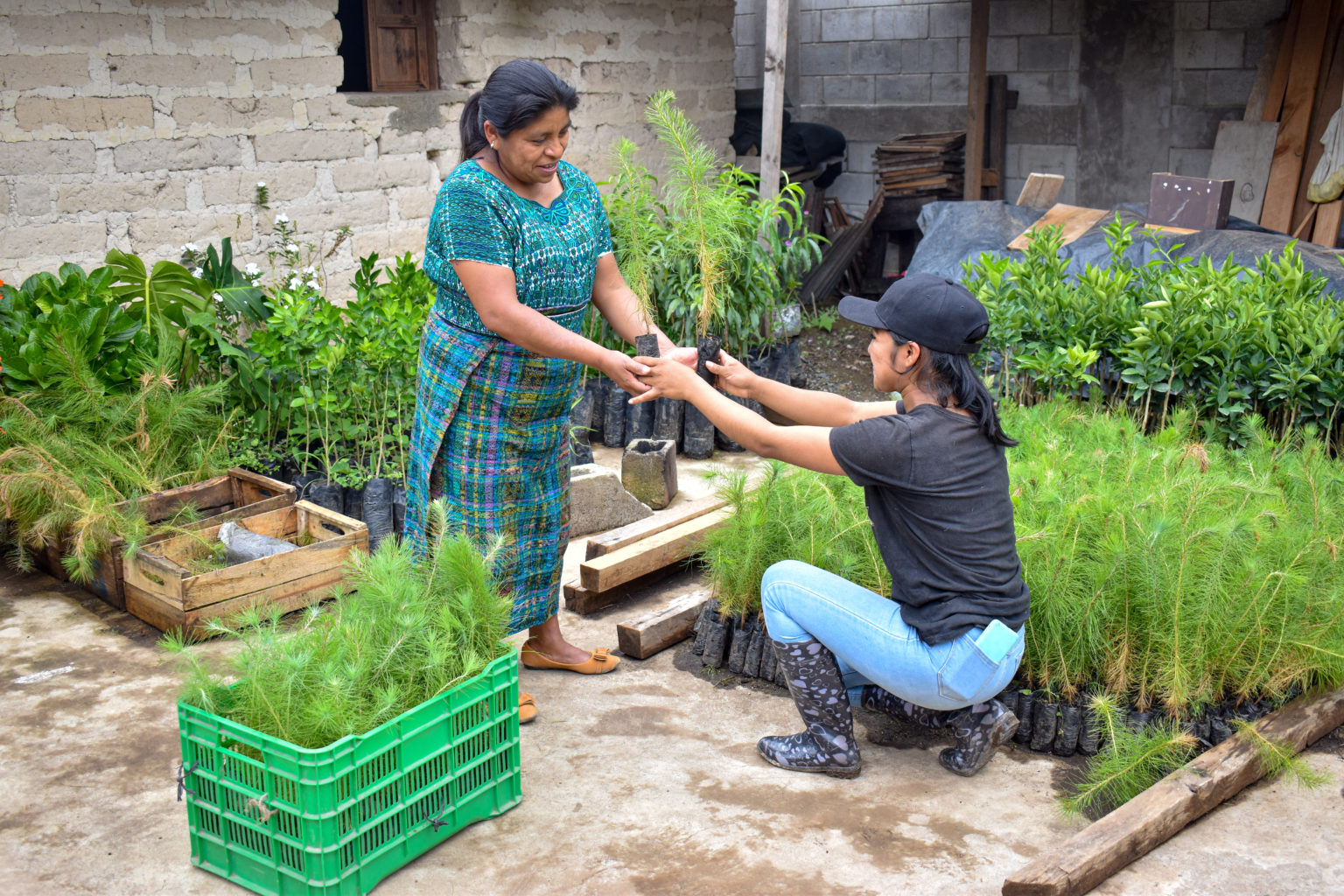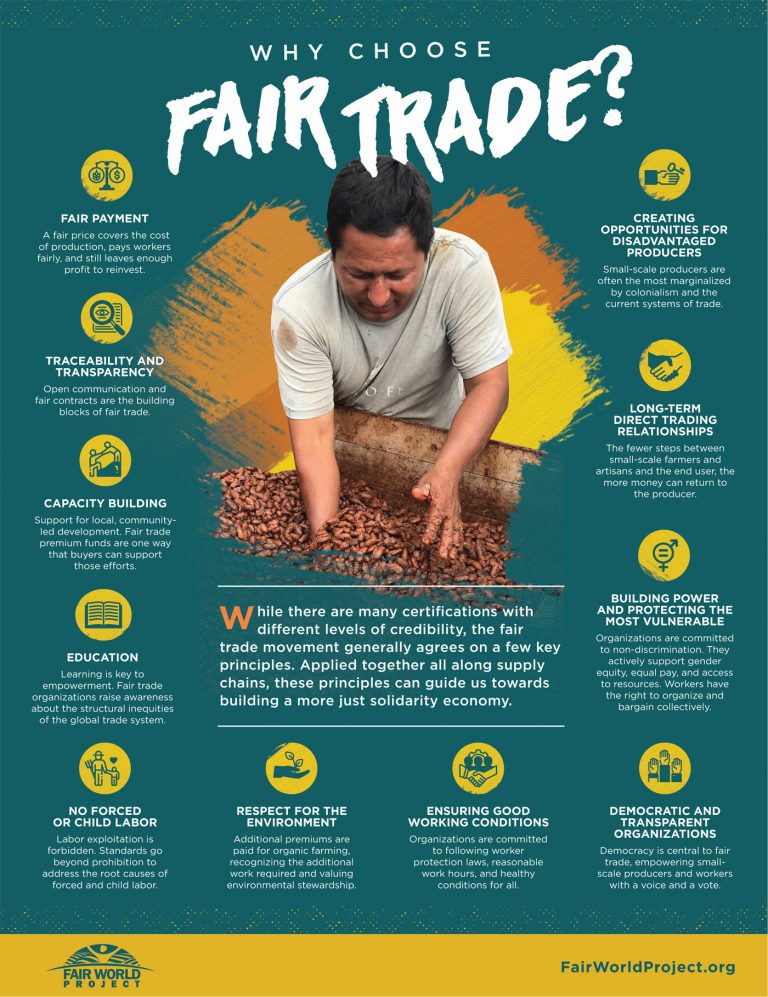Observing Fair Trade Month: why it means not taking the short-cuts

“The fair trade movement is about calling into question the existing structures and processes in our global supply chains, which means we can’t take short cuts. Businesses must do more than simply meet the minimum requirements determined by fair trade labels, and as conscious consumers it can go a long way to be discerning about which brands, labels, and projects we choose to support.”
October marks National Fair Trade Month in the United States: a month dedicated to raising awareness of the importance of fair trade, and the promotion of buying and using socially and commercially responsible products.
If you’re reading this on our website, you’ve probably already heard of fair trade. Yet, despite the term’s ubiquity, its full meaning still eludes most of us, with the numerous fair trade entities — from certification bodies to national organizations and international networks — adding to the confusion.
Fair trade came about when it became clear that globalization and free trade facilitated the Global North’s exploitation of producers in the Global South, as corporations from the former capitalized on existing power imbalances to cut costs by outsourcing land, labor and other resources from the latter. With a global supply chain, it became impossible for anyone to know who or what processes had been involved in the production and distribution of the goods they were buying.
The fair trade movement attempts to address these inequities by setting standards for partnerships between businesses and producers to ensure transparency and guarantee the respectable livelihoods of those producers. Examples of such standards include minimum price guarantees for ingredients, no forced or child labour, organic production processes, and premiums being paid for local community development.
Fairtrade International, World Fair Trade Organization, Fair Trade USA, Fair For Life… each organization and label comes with similar yet distinct focus, boasts a range of fair trade claims, and requires varying levels of transparency and stringency. With so many organizations and certification schemes co-existing and being associated with the term “fair trade”, it’s no wonder that consumers struggle to know where to look.
Recognizing this challenge, Fair World Project, a non-profit with the mission of promoting and protecting fair trade principles and accuracy in labeling, has distilled the basic principles of the fair trade movement for consumers’ understanding:
- Long-Term Direct Trading Relationships… between end user and producer… between end user and producer
- Payment of Fair Prices… which covers the cost of production, pays workers fairly, and leaves enough profit to reinvest
- No Child, Forced or Otherwise Exploited Labor… by addressing the root causes of labor exploitation… by addressing the root causes of labor exploitation
- Workplace Non-Discrimination, Gender Equity, and Freedom of Association… which grants the rights of workers to organize and bargain collectively… which grants the rights of workers to organize and bargain collectively
- Democratic & Transparent Organizations… that empower small-scale producers and workers with a voice
- Safe Working Conditions & Reasonable Work Hours… which protect workers rights
- Investment in Community Development Projects… through fair trade premiums, for example\
- Environmental Sustainability… such as organic farming methods or other additional work that values environmental stewardship
- Traceability and Transparency… to both producers and consumers

The basic principles of fair trade outline the minimum standards that we should be expecting from businesses as we build towards a just and sustainable future. These days, however, fair trade is increasingly being criticized for not really being fair. Much of this can be attributed to voluntary corporate commitments, where profit-seeking corporations create their own ambiguous certification schemes and claim it as “fair trade”, thereby cutting costs by avoiding minimum price guarantees. Just like the term “sustainable”, “fair trade” has become misused because profit-seeking brands turn to “fair washing” as a marketing strategy. To combat this, Fair World Project has also created consumer guides (listed at the end of this article) on how to avoid falling for fair washing.
What does Fair Trade mean to Grow Ahead?
In Grow Ahead, we often talk about how consumers in cities can be more involved despite being geographically divorced from on-the-ground and frontline communities. When practiced right, fair trade is both about keeping businesses accountable and about empowering consumers to turn each purchase into an inherently political act. Accurate and transparent fair trade information empowers consumers who have the financial means and purchasing power to make their purchases with intention.
With environmental stewardship as one of the basic fair trade principles, reforestation often features as an element in fair trade products too, with many of these products also boasting certifications from organizations such as Rainforest Alliance or the Forest Stewardship Council (FSC). Yet, it is important to recognize that tree-planting can also be done unfairly and unsustainably. Instead, consider these four questions:
- Where are the trees planted?
Wherever there is land, there is likely to be a community that depends on that land, be it human or non-human. Indiscriminate tree planting can drive existing communities off their land and affect native ecosystems. - Who is planting trees?
Allowing local communities to lead the tree-planting process creates opportunities for reforestation to also become a way for communities to meet their needs for food, lumber, cash crops, or other local priorities. As the community benefits from this project, they will continue to care for the saplings, allowing them to grow into healthy forests in the long-term. - How are trees being planted?
Similarly, indiscriminate planting (e.g. planting trees in a monoculture) that does not align with the native ecosystem and local community reduces likelihood of long-term forest regeneration. - Which trees are being planted?
Planting native tree species maximizes the positive impact of the reforestation project and reduces the harm imposed on existing communities and ecosystems.
Ultimately, it’s not sufficient to just look at labels. The fair trade movement is about calling into question the existing structures and processes in our global supply chains, which means we can’t take short cuts. Businesses must do more than simply meet the minimum requirements determined by fair trade labels, and as conscious consumers it can go a long way to be discerning about which brands, labels, and projects we choose to support.
P.S. Are you working with an organization that values fair trade principles? If so, let’s collaborate! Grow Ahead is looking to partner with mission-aligned organizations to boost our projects. We’d love to help advance your sustainability mission, whether in a Giving Tuesday project or a longer-term partnership. If you’re interested, do reach out to Rui Qi at [email protected] !
Interested to find out more? Here are additional resources on Fair Trade by our partner, Fair World Project:
- Small-scale Farmers Fact Sheet
- Choose Fair Trade Pocket Guide
- Reference Guide to Fair Trade and Worker Justice Certifications
- When a tree isn’t just a tree - Community-led reforestation
- For A Better World Podcast
